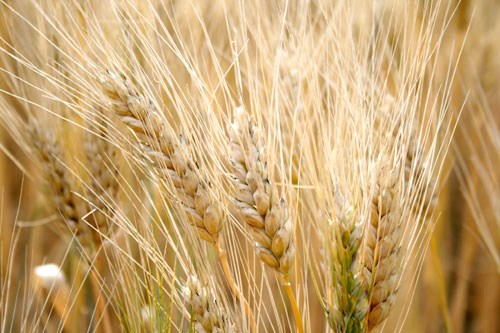Harvest has started in most areas of Saskatchewan with the swathing and combining of winter cereals, according to Saskatchewan Agricultures weekly crop report. I made a round on a canola crop but its not ready yet.
Harvest has started in most areas of Saskatchewan with the swathing and combining of winter cereals, according to Saskatchewan Agricultures weekly crop report. I made a round on a canola crop but its not ready yet. Next week I will begin (harvest) on canola and durum, stated Darby Goski, a farmer north of Cedoux.There is a lot of drown-out on my crops, but once I get swathing I will know more of how much. Harvest has advanced the furthest in southern Saskatchewan, where just over one per cent of the total crop has been harvested.Across the province, less than one per cent of the total crop has been harvested. One year ago, one per cent of the 2009 crop had been combined, seven per cent swathed or was ready to straight combine, haying was wrapping up and good growing conditions helped advance crops.In the southeastern region there is eight per cent of the winter wheat, 10 per cent of the fall rye and four per cent of the peas combined. One per cent of the lentils, three per cent of the peas and two per cent of the canola have been swathed.John VanStaveren, a farmer in the Creelman area, has not started swathing yet and the quality of his crops are looking really good. Damage on the crops would be 10 per cent flooded and we got some hail but not very much, about five to 10 per cent damage on some fields, explained VanStaveren.Haying is proving difficult, with high humidity slowing operations. Hay quality has also been reduced in some areas due to rain on swath. Hay crops, I think, are really good. Ive talked to different cattle guys and theyre getting a lot of hay. Their only challenge is the weather, declared VanStaveren.Baling hours are cut short due to humidity in the evening and some cattle guys are having issues with foot rot in cattle. Goski stated that hay crops are looking fantastic this year by the amount of bales on the fields. He declares its the best in years.Crop damage is mostly attributed to hail and insects. The following communities reported hail damage: Frobisher, Stoughton, Moosomin, Indian Head, Fillmore, Weyburn and Odessa.On Goskis farm, he said on Sunday they received hail which caused some crop damage. Golf-ball-sized hail was reported in the Francis area on Aug. 8. In the Ceylon area, some severely-hail-damaged barley crops are 小蓝视频 cut for feed.Insects, theyre nothing to worry about and there have been no diseases on my crops, said VanStaveren. Leaf diseases are also causing damage in areas and there is some lodging in crops.Crops have advanced nicely with the warm weather in the past few weeks. Ive been hauling grain to get bins empty and getting ready for harvest. Swathing will begin in the next week or two and combining wont begin until September, explained VanStaveren.Many areas are still one to two weeks behind normal in crop development. Farmers are getting ready for harvest, haying and controlling weeds on unseeded acres. Some barley crops are almost ready to swath. Goski remarked, Im getting equipment ready and have been moving grain around.With some exceptions, most areas in the region received less than 10 mm of rain during the past week. The Griffin area had 15 mm, the Fillmore area saw 16 mm, the Lampman area received 13 mm, and the Windthorst area 11 mm.The deadline to select winterkill coverage for fall rye and winter wheat is Aug. 25.
